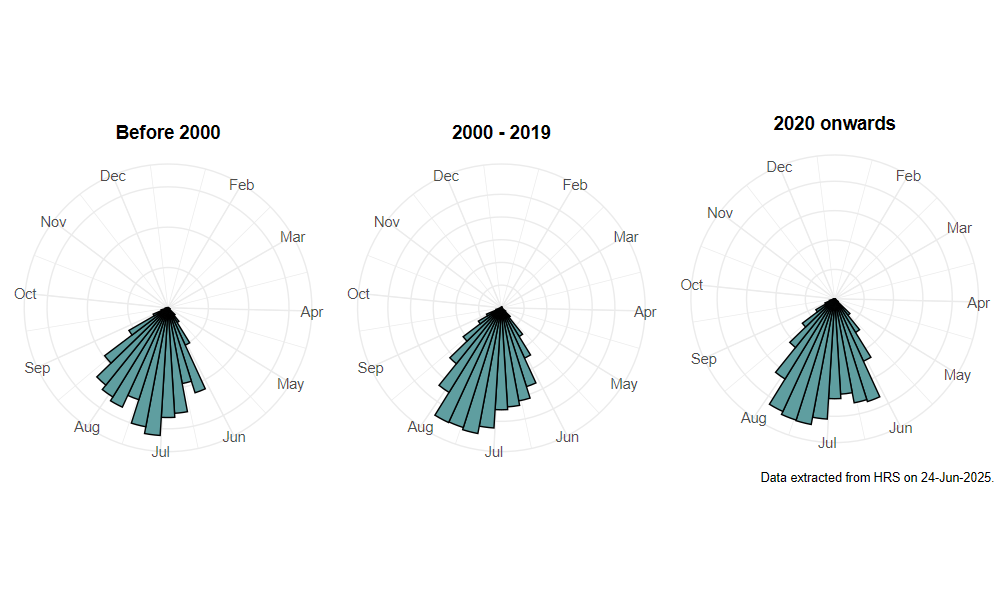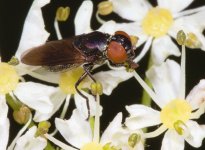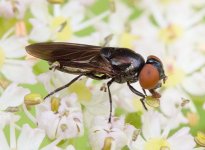Chrysogaster solstitialis (Fallén, 1817)
Identification
Identification difficulty = 2. ![]()
![]() according to Ball & Morris, 20241
according to Ball & Morris, 20241
Biology
The larva inhabits seepages, brooks and small water bodies in woodland and scrub. It develops within decaying vegetation and rich mud in very shallow water. Adults are usually seen on the flowers of white umbels such as Hogweed Heracleum sphondylium, Wild Angelica Angelica sylvestris, Hemlock Water Dropwort Oenanthe croccata and Upright Hedge Parsley Torilis japonica, especially in damp shady locations.
Flight period
The following plots show the number of unique records per week excluding those reported to be of immature stages.

Distribution
Better levels of recording start to highlight gaps in this species' occurrence that may reflect genuine absences rather than recorder effort. Its overall distribution is widespread and common, but there are notable gaps from parts of eastern England and east Lancashire. Absences from the west coast of Scotland may be an artefact of recorder effort.

Trends
The following plots show the Frescalo TFactor vs year and a map of the rescaled frequency (all records) for the species.
-
Ball, S., & Morris, R. (2024). Hoverflies of Britain and Ireland. WILDGuides (3rd ed.). Oxford: Princeton University Press. ↩

